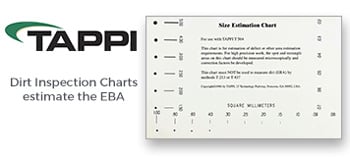|
Supplier partnering-Keep your profits up and costs down
By Ed Rigsbee, CSP
Think you’re getting the most from your company’s partnering activities? Chances are, you can do even better-and reap the results.
Through most of the twentieth century, American business
has functioned based on the paradigm of adversary transactions, squeezing
the lifeblood out of all that fall unknowing victim. When I entered the
American workforce as a salesman in the 1970s, I learned that many small
manufacturers called this the Sears Syndrome.
Decades ago, this syndrome was prevalent in situations
where small companies supplied large national companies. While today it
may not be fair to degrade the name of a respected American retailer,
decades ago this was conventional wisdom in the supply sectors. Fortunately
today, we are seeing a major business philosophical shift happening before
our eyes! The cost of doing business is steadily increasing yet only in
a few industries are profits increasing to keep pace. A new belief or
model—a new paradigm—has become absolutely necessary. This
paradigm is collaboration.
Partnering is a current buzzword for collaboration. Partnering is the
process of two or more entities coming together for the purpose of developing
synergistic solutions to their challenges. Partnering is more a journey
than a destination. No matter how well you think you’re currently engaging
in partnering, you can always do it better. Partnering is both a mind-set
and an activity—a place where management, marketing, and philosophy
meet.
Many benefits from partnering are obvious and some are not. Listed below
are a few of the important reasons for you to embrace partnering:
- For technological contributions or a competitive edge.
- Competition from non-traditional sources has created a need to become more competitive.
- Develop a market advantage and to increase distribution capabilities.
- Risk sharing and financial stability.
- Inventory control and automatic fulfillment for product sales
and manufacturing materials.
- Greater consistency in service and product quality and availability.
- Better productivity and quicker response times.
Along with the benefits of partnering also come the pitfalls or land
mines. Identifying these early will greatly increase your prospects of
achieving effective partnering alliance relationships. Some of the more
common partnering pitfalls:
- Not making an organizationally complete partnering commitment,
especially from executive suites.
- Alliance partners having incongruent core values.
- Alliance partners having unexpected inefficiencies or poor management,
causing reduced partnering capabilities.
- Resistance from employees on new methods of operation.
- After entering into a partnering relationship, one partner unexpectedly
pulls out leaving the remaining partner or partners in need.
- Culture clashes among partners.
- Complacent attitude or expecting others to complete the difficult
or unpleasant activities.
- Hidden agendas or unrealistic expectations.
In understanding the possibility for these calamities to arise, you can
plan and organize your partnering agreements to hopefully eliminate these
potentially dreadful occurrences.
Know thy partner
One of the best ways to guarantee failure is not to know your partner’s
strengths and weaknesses. Knowledge of your partner is imperative for
successful long-term relationships. In today’s unstable economic environment,
you want the least amount of surprises possible. Depending on where you
fit into the supply chain, as a manufacturer, wholesale distributor, or
dealer/retailer, your needs and possibilities will differ.
Five steps for developing your partnering relationships:
- Monitor. Study your business, observe, and identify areas
for improvement. Also take inventory of core strengths that might be
valuable to a potential alliance partner.
- Educate. Learn about those companies you might consider for
partnering arrangements, arrangements that create a win-win result for
all who participate. Ask yourself and your management team about their
strengths and weaknesses—what effect would they have on your business?
This is the time to study value based purchasing and to understand the
difference between cost of an item and total cost of procuring the item.
- Select. This is the critical step because all your future
efforts are built on this foundation. Select with knowledge, understanding
and commitment. Surely there is little security built upon a flimsy
foundation. Search for the strongest materials for your partnering foundation.
- Organize. Now you are to the point of identifying, understanding,
and putting together the possibilities for an alliance. This will be
not only your partnering structure but also your road map—plan
it well. This is where you must determine if you are rewarding the correct
behaviors in your organization. Are you making the mistake of rewarding
your purchasing agents for obtaining the lowest item cost and not for
the lowest total procurement cost?
- Charter. This is the agreement, whether it is a handshake
(which I advise against) or contractually. I strongly urge all buy/sell-partnering
alliances to put their agreements on paper—it is so much more
clear six months or two years later. Each party’s commitment to the
other, on paper, will smooth a path through the potholed road of partnering.
Also your charter should explain conflict resolution, as Murphy’s Law
is sure to emerge. Be ready for it and the conflict will be resolved
timely and amiably.
The perfect pair
Selecting your trade partners well will serve you and your company for
years to come. To aid you in the search, I’ve identified many of the necessary
qualities of a person, management team, or corporate culture with which
to successfully build your alliance.
- Wants to win. There is no intelligent reason to partner with
a loser. This kind of relationship will only drag you or your company
down to an unacceptable performance or production level. You and they
must have a desire to win—to want to do better, to be useful in
creating synergy with your partner!
- They understand that they are still ultimately responsible for
their own success. They understand the value of synergy and acknowledge
that accountability goes both ways. Be careful not to always assume your
partner is looking out for your best interest.
- The leader and or contact must be an active listener. To truly
keep in touch with the heartbeat of an alliance, active listening is critical.
This helps you to know what you need to do extra and when the other side
is falling behind in their commitment to you. Alertness from both sides
equals mutual success.
- Understands and cares about what drives their partner’s’
businesses. Because successful partnering is about synergy, you must consistently
give the correct kind of value to the relationship. Regular Relationship
Bank deposits are always required before withdrawals are possible. You
can only offer value to the relationship by knowing what your partner’s
business considers as being synergistically important.
- Responds well to, and acts on, feedback. The only possibility
for forward and beneficial movement occurs when leaders are willing to
accept counsel. None of us are smart enough to know it all. Notice I didn’t
use the word criticism.
- Flexibility, especially when events or circumstances are not
what was expected. If you don’t have the ability to change direction when
the road ahead is washed out, you’ll find yourself wishing for rescuers
as you uncontrollably float down the stream. Flexibility is absolutely
necessary because things will never be exactly as we expect.
- Trust, integrity and respect for others. I found this to be the
common thread weaving through an organization’s consciousness—from
the factory floor to the executive suite.
- Seeks win-win arrangements and solutions. Earlier, I stated that
you must look after yourself, but if that is all you do, you’re of little
value as a long-term buy/sell partner. You must win for the sake of your
business. At the same time your partner must also win. This will develop
a desire within them to want to continue in the relationship. The partnering
advantage becomes stronger the longer the relationship lasts.
- Understands that partnering is a relationship of interdependence,
not dependence or independence. Visualize your partner and yourself as
partially overlapping circles. The overlapping parts of the circles are
your areas of mutual value. This overlapping area is also your area of
interdependence.
Buyers and sellers, working together for mutual improvement is the great
benefit received from partnering. Be careful of unrealistic expectations
on one another. Too often one’s perception of disloyalty from a
partner can in really be an unrealistic expectation. Communicate your
needs, as both benefits and pitfalls are inherent in partnering. The benefits
usually outweigh the challenges. Be careful and methodical in the search
for alliance partners. Take care in carefully structuring the arrangement.
Do this, and you will succeed for years to come. Remember—partnering
is not instant gratification but rather a long-term paradigm for success.
About the author: Ed Rigsbee, CSP is the author of
PartnerShift, Developing Strategic Alliances and The Art of Partnering.
Rigsbee has more than 1,000 published articles to his credit and is a
regular keynote presenter at corporate and trade association conferences
across North America. He can be reached at 800-839-1520 or EdRigsbee@aol.com.
|





